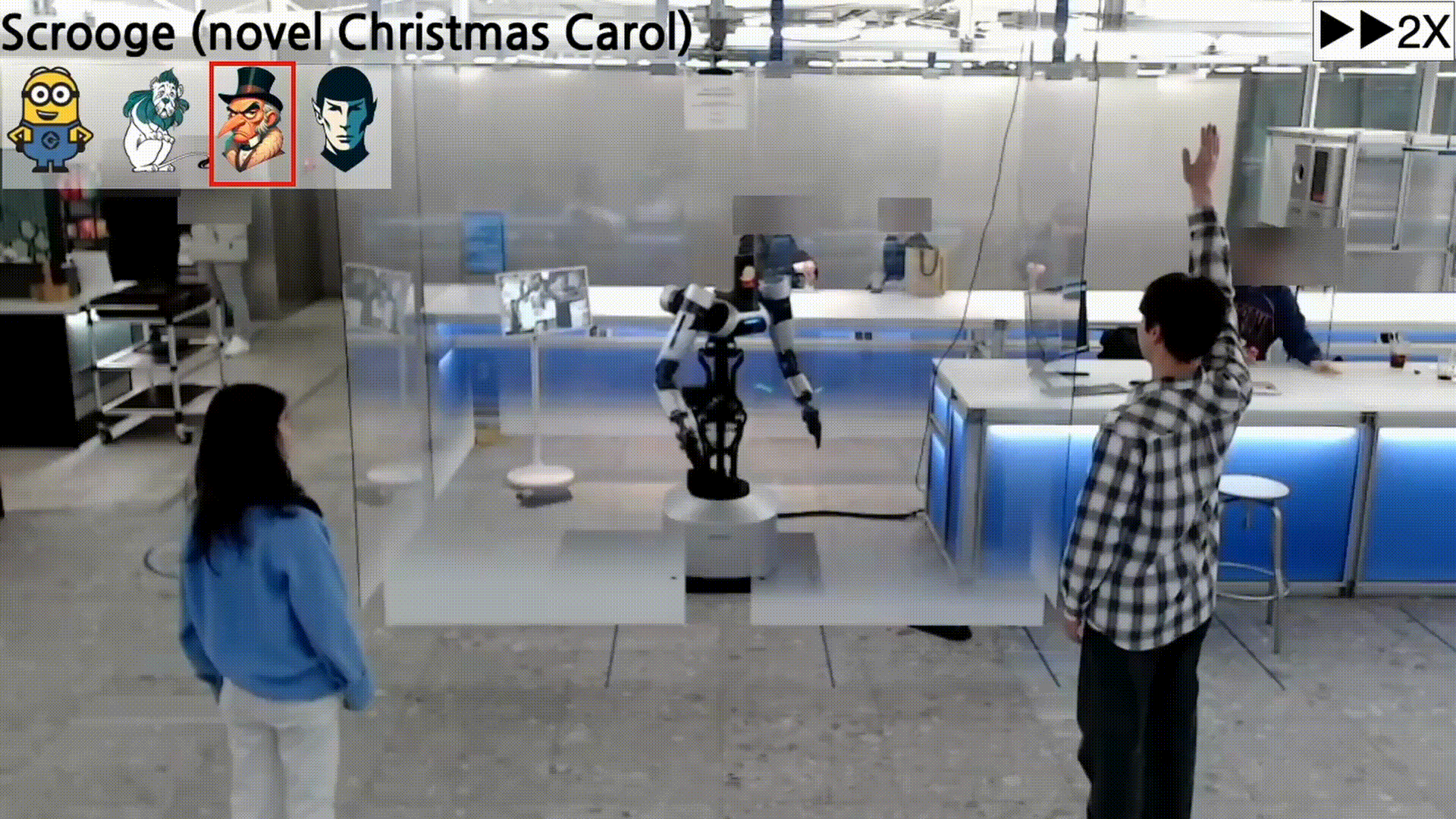publications
publications by categories in reversed chronological order. generated by jekyll-scholar.
2025
-
 The Turkish Ice Cream Robot: Examining Playful Deception in Social Human-Robot InteractionsHyeonseong Kim, Roy El-Helou, Seungbeen Lee, and 2 more authorsarXiv preprint, 2025
The Turkish Ice Cream Robot: Examining Playful Deception in Social Human-Robot InteractionsHyeonseong Kim, Roy El-Helou, Seungbeen Lee, and 2 more authorsarXiv preprint, 2025Playful deception, a common feature in human social interactions, remains underexplored in Human-Robot Interaction (HRI). Inspired by the Turkish Ice Cream (TIC) vendor routine, we investigate how bounded, culturally familiar forms of deception influence user trust, enjoyment, and engagement during robotic handovers. We design a robotic manipulator equipped with a custom end-effector and implement five TIC-inspired trick policies that deceptively delay the handover of an ice cream-shaped object. Through a mixed-design user study with 91 participants, we evaluate the effects of playful deception and interaction duration on user experience. Results reveal that TIC-inspired deception significantly enhances enjoyment and engagement, though reduces perceived safety and trust, suggesting a structured trade-off across the multi-dimensional aspects. Our findings demonstrate that playful deception can be a valuable design strategy for interactive robots in entertainment and engagement-focused contexts, while underscoring the importance of deliberate consideration of its complex trade-offs. You can find more information, including demonstration videos, on \hrefherehttps://hyeonseong-kim98.github.io/turkish-ice-cream-robot/
-
 Learning-based Dynamic Robot-to-Human HandoverHyeonseong Kim, Chanwoo Kim, Matthew Pan, and 2 more authorsIEEE International Conference on Robotics and Automation (ICRA), 2025
Learning-based Dynamic Robot-to-Human HandoverHyeonseong Kim, Chanwoo Kim, Matthew Pan, and 2 more authorsIEEE International Conference on Robotics and Automation (ICRA), 2025This paper presents a novel learning-based approach to dynamic robot-to-human handover, addressing the challenges of delivering objects to a moving receiver. We hypothesize that dynamic handover, where the robot adjusts to the receiver’s movements, results in more efficient and comfortable interaction compared to static handover, where the receiver is assumed to be stationary. To validate this, we developed a nonparametric method for generating continuous handover motion, conditioned on the receiver’s movements, and trained the model using a dataset of 1,000 human-to-human handover demonstrations. We integrated preference learning for improved handover effectiveness and applied impedance control to ensure user safety and adaptiveness. The approach was evaluated in both simulation and real-world settings, with user studies demonstrating that dynamic handover significantly reduces handover time and improves user comfort compared to static methods. Videos and demonstrations of our approach are available at \hrefherehttps://zerotohero7886.github.io/dyn-r2h-handover/
2024
-
 Towards Embedding Dynamic Personas in Interactive Robots: Masquerading Animated Social Kinematic (MASK)Jeongeun Park, Taemoon Jeong, Hyeonseong Kim, and 7 more authorsIEEE Robotics and Automation Letters, 2024
Towards Embedding Dynamic Personas in Interactive Robots: Masquerading Animated Social Kinematic (MASK)Jeongeun Park, Taemoon Jeong, Hyeonseong Kim, and 7 more authorsIEEE Robotics and Automation Letters, 2024This letter presents the design and development of an innovative interactive robotic system to enhance audience engagement using character-like personas. Built upon the foundations of persona-driven dialog agents, this work extends the agent’s application to the physical realm, employing robots to provide a more captivating and interactive experience. The proposed system, named the Masquerading Animated Social Kinematic (MASK), leverages an anthropomorphic robot which interacts with guests using non-verbal interactions, including facial expressions and gestures. A behavior generation system based upon a finite-state machine structure effectively conditions robotic behavior to convey distinct personas. The MASK framework integrates a perception engine, a behavior selection engine, and a comprehensive action library to enable real-time, dynamic interactions with minimal human intervention in behavior design. Throughout the user subject studies, we examined whether the users could recognize the intended character in both personality- and film-character-based persona conditions. We conclude by discussing the role of personas in interactive agents and the factors to consider for creating an engaging user experience.